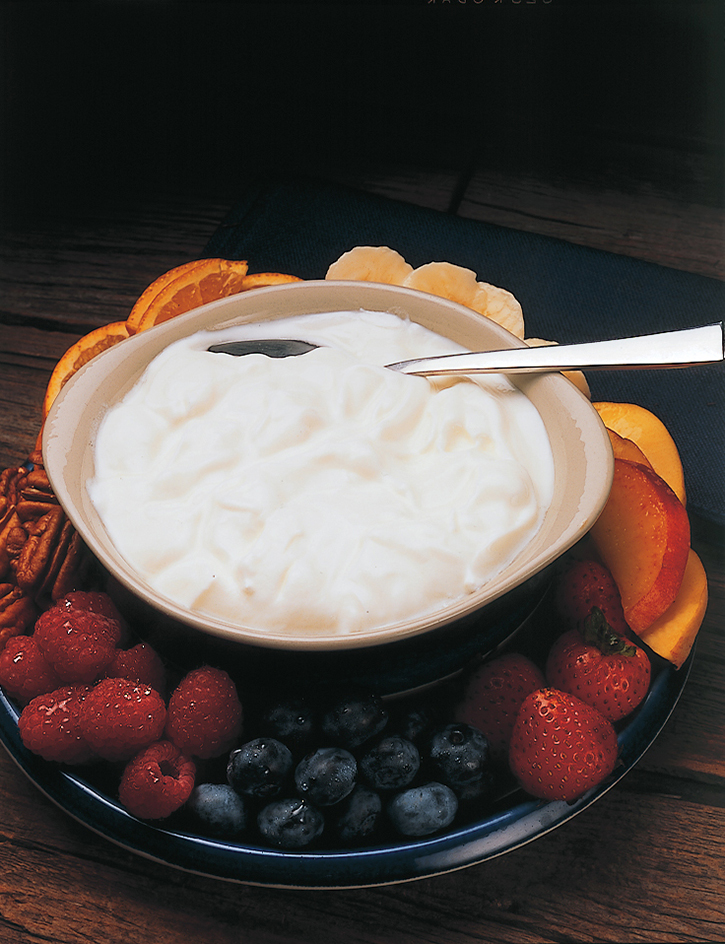Yogurt, also spelled yoghurt, is a smooth, semisolid dairy product made from milk . It has a high acid content and thick curd. Yogurt ranks as a popular food in many parts of the world. People in Iran, Turkey, and some other countries of the Middle East have eaten yogurt for thousands of years. Yogurt consumption in the United States increased considerably in the late 1900’s.

Yogurt may be made from the milk of buffaloes, cows, goats, or other mammals. In the United States, most commercial yogurt is made from cows’ milk. Yogurt makers add certain types of bacteria to milk to make yogurt. These bacteria, called Lactobacillus bulgaricus, L. acidophilus, and Streptococcus thermophilus, multiply at carefully controlled temperatures and cause milk to ferment (ripen). During the fermentation process, the bacteria change lactose (milk sugar) into lactic acid. Lactic acid causes fluid milk to thicken, resulting in yogurt.
The high acid content of yogurt gives the product a sour taste that many people enjoy. However, many others prefer yogurt that has been sweetened with fruit flavoring. Yogurt has the same nutritional elements as milk. Some unflavored yogurt contains only a few calories per serving and is popular for low-calorie diets.
Many people make yogurt at home. They use commercial yogurt or bacteria cultures to start fermentation in milk. Several companies manufacture yogurt-making machines for home use.
See also Probiotics .
